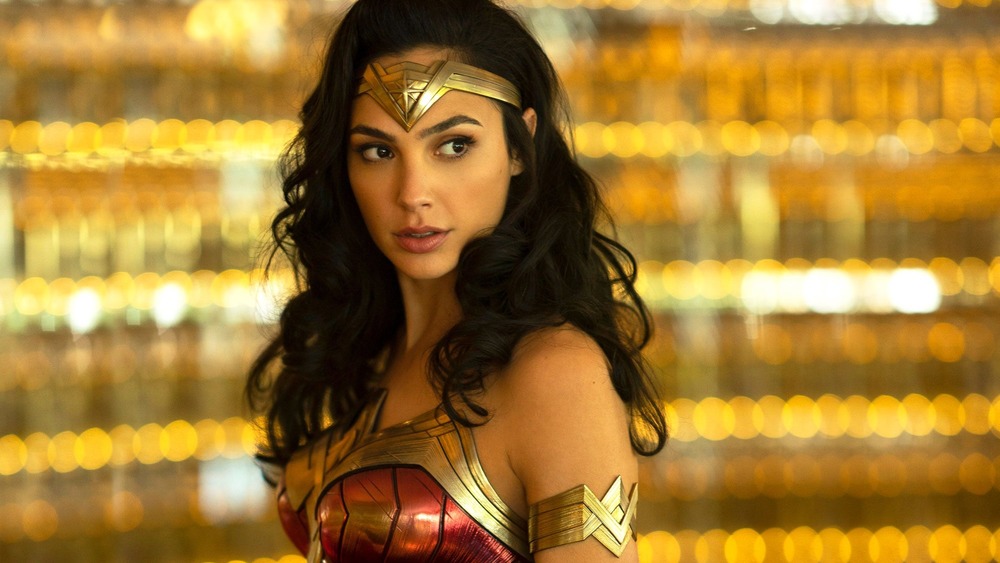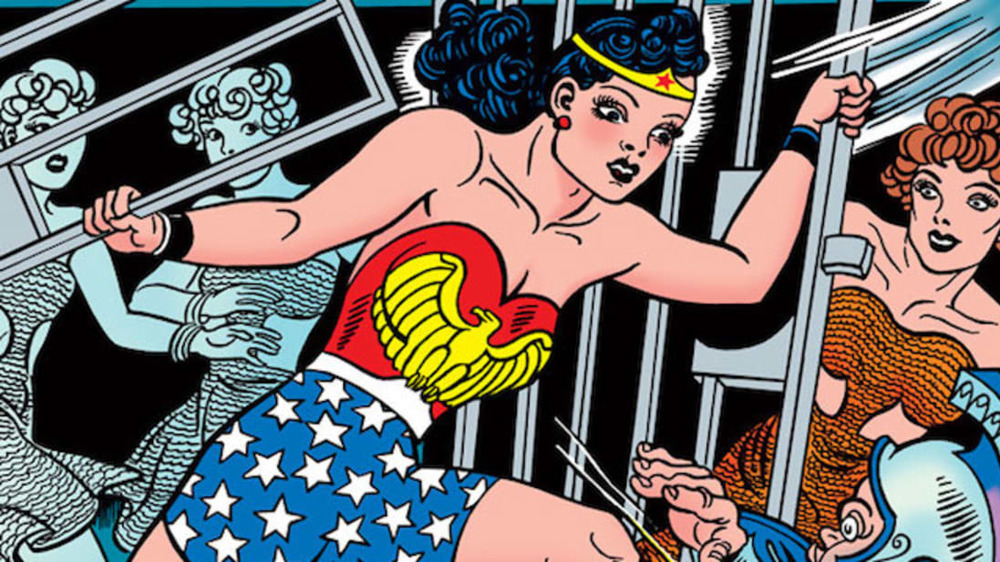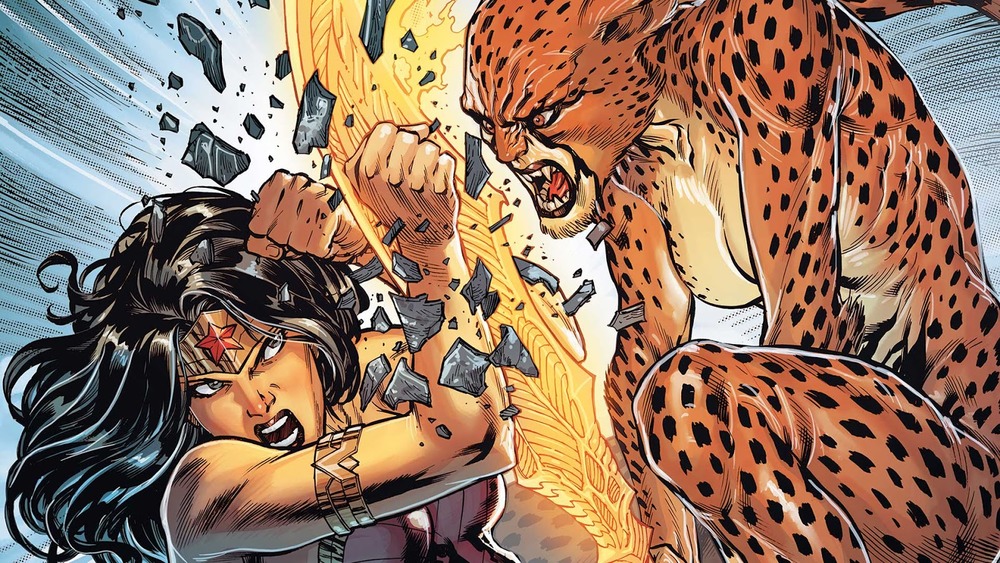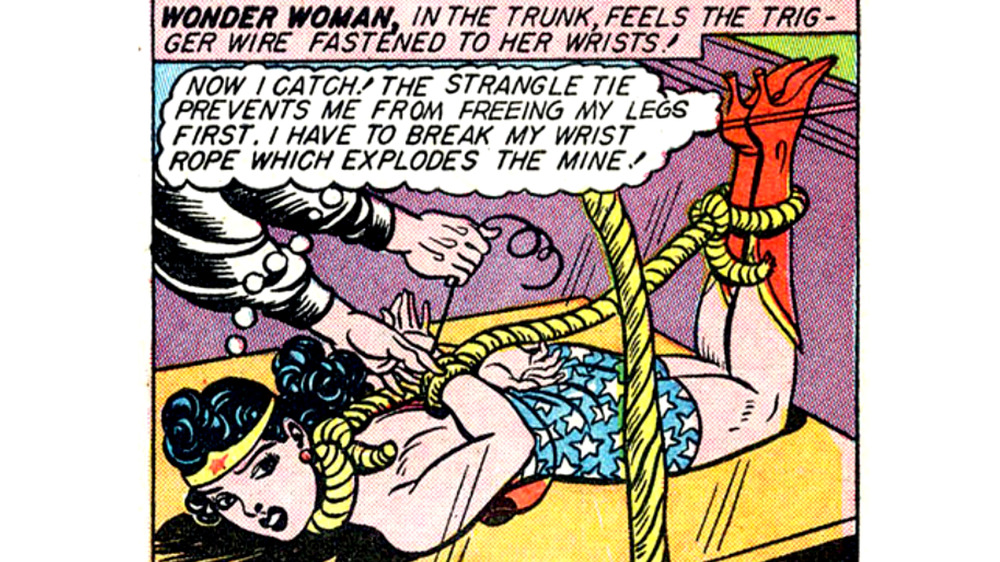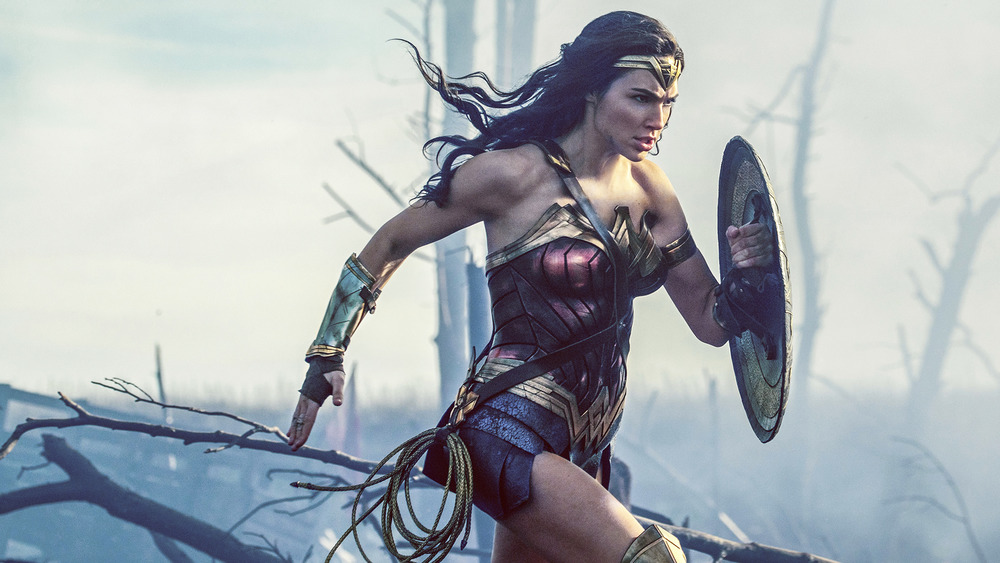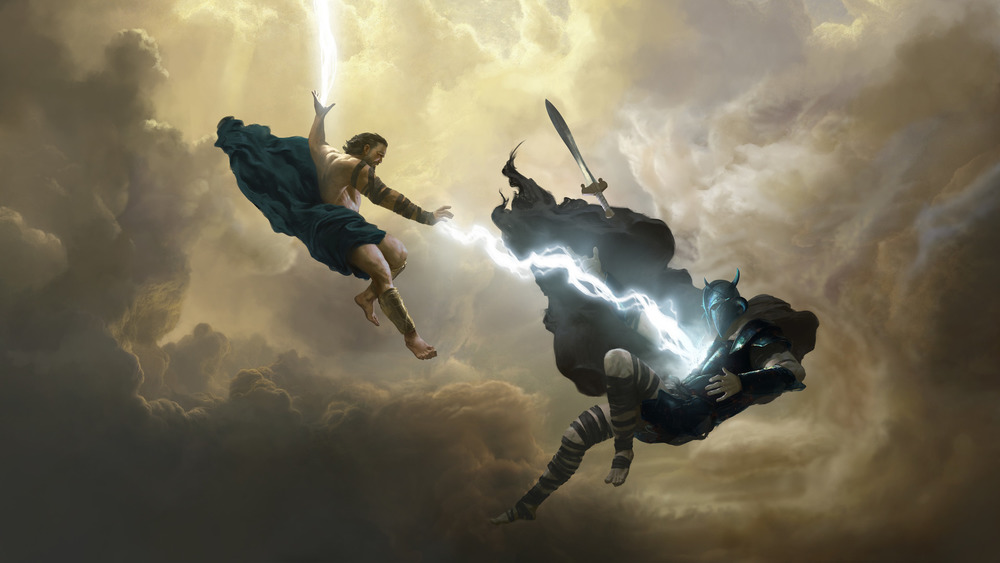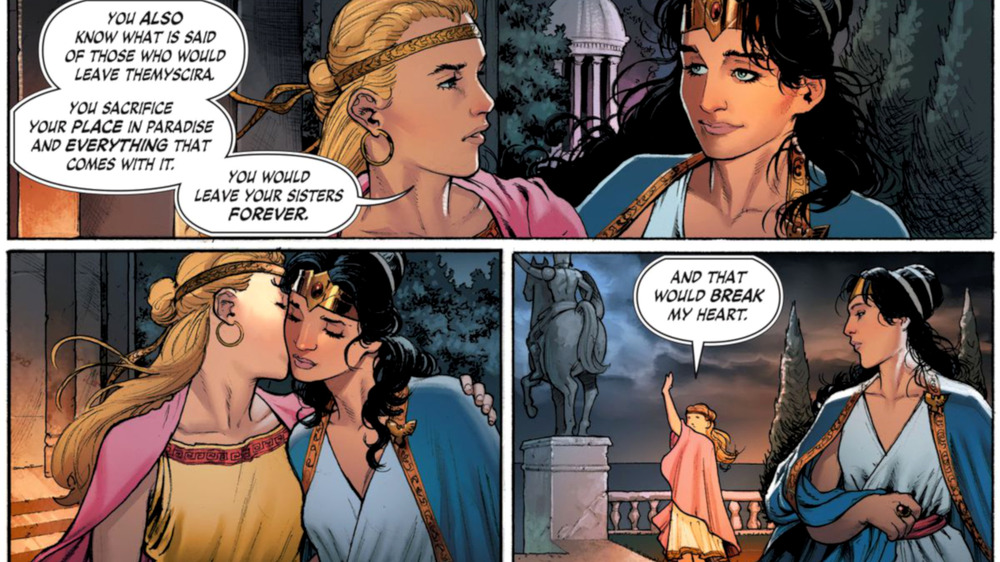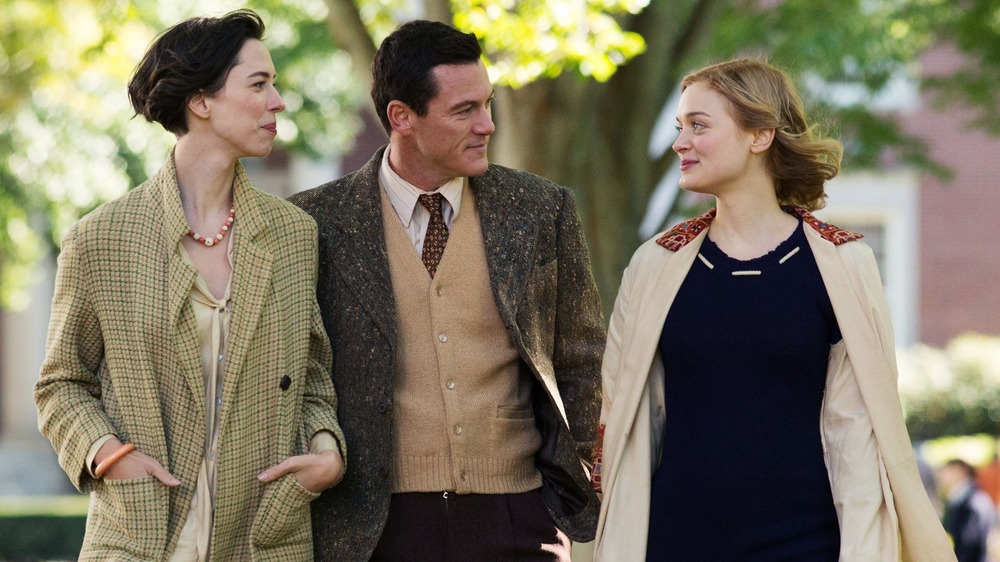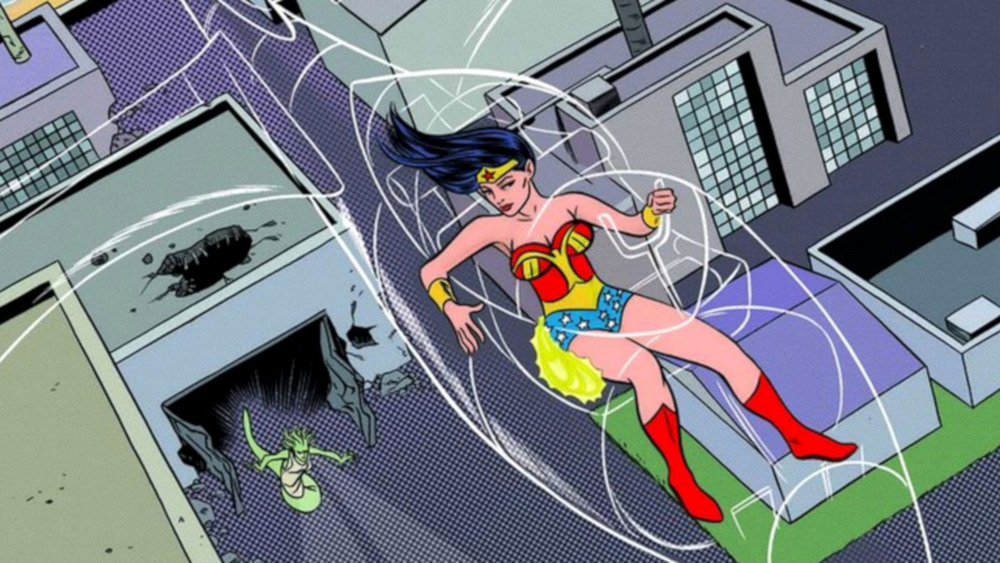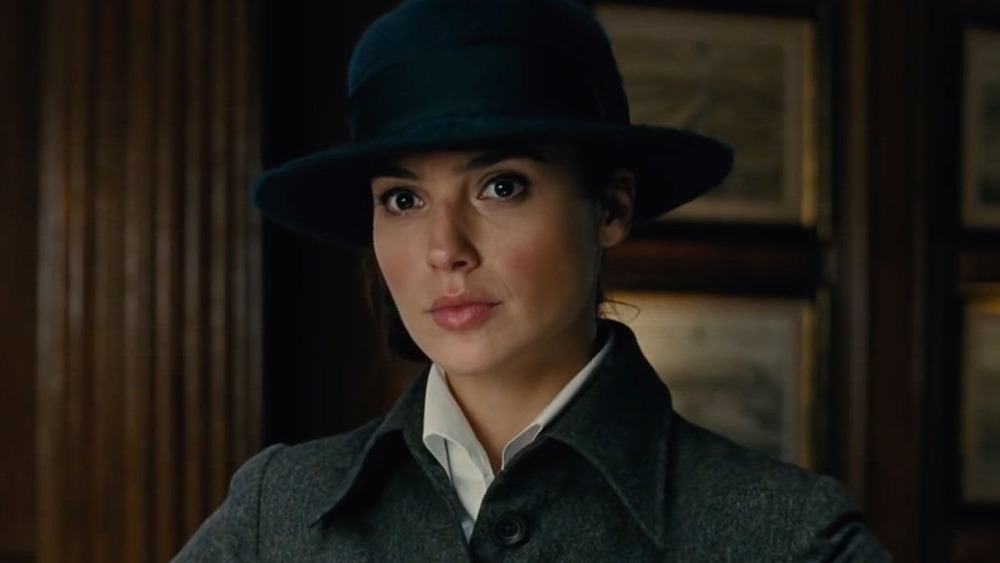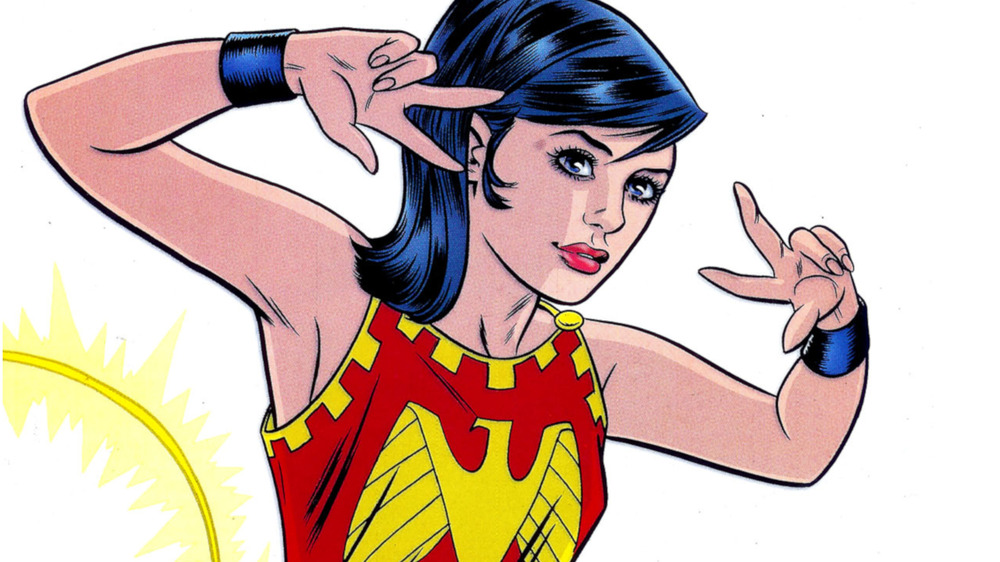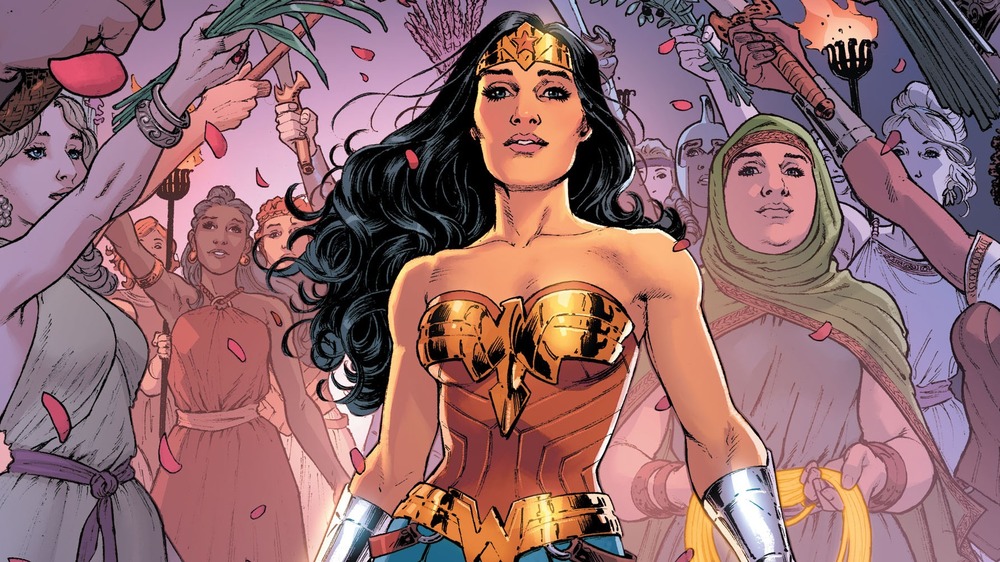Our Wonder Woman Expert Answers The World's Most Difficult Wonder Woman Questions
With Wonder Woman 1984 finally making its way to audiences, there's a lot of talk in the air about the Amazon warrior Princess Diana, who became Wonder Woman when she left the Amazon homeland of Themyscira for what the Amazons call Man's World. Israeli actor Gal Gadot embodies the classic version of the character so well onscreen that there's hardly a difference from her comic book counterpart.
Of course, comics tend to be much more narratively complicated than movies, especially those that have run nonstop for as long as Wonder Woman's stories, which started in 1941. So if the movies have made you curious about Wonder Woman, who she is and how she came to be, there's a good chance you have some questions about those comics, and how the various versions can be reconciled. Fortunately, we have answers. Here are some of the most frequently asked questions about some of the most complicated aspects of the character, with the best answers we can offer.
Why does Wonder Woman's costume look like an American flag when she's not even American?
Like a lot of these questions, this one has multiple answers, depending on how in-depth you want to go. The first and most obvious answer is that Wonder Woman dresses like an American flag because she was created during World War II, when American patriotism was at an all-time high. Plus, she was created by psychologist William Moulton Marston, who had the subversive-for-the-time goal of teaching little girls to be confident, assertive, and heroic. Wrapping her in patriotic imagery made her more likely to be embraced by the mainstream — and it worked.
As far as in-story explanations, those original 1940s comics directly said that she was dressed to honor the United States, the best and most democratic nation. Later comics would find less jingoistic explanations. George Pérez's 1987 reboot, for example, introduced the idea of Diana Trevor, an American and the mother of Steve Trevor, who had come to the island of Themyscira decades before her son would crash there. So in that story, Princess Diana's Wonder Woman costume was created to honor Diana Trevor, who was also the Princess's namesake.
As Wonder Woman's costume has evolved over the years, more recent artists have deliberately moved away from the American flag aesthetic. The white stars are frequently eliminated, and the star on her tiara often has more than five points. With just those changes, as we see in the movies, the flag aesthetic becomes far less overt and the costume easier to pass off as authentic Amazon garb.
Who is Wonder Woman's true arch-nemesis?
There's an argument to be made that Doctor Psycho is Wonder Woman's ultimate enemy. Psycho represents pure misogyny on a level that almost no other villain does, so there's something iconically satisfying about seeing him defeated by the original feminist superhero. Plus, Psycho's psychic powers are a great foil for Wonder Woman's more physical abilities, and his love of illusions contrasts with Diana's depiction as an embodiment of truth. On the other hand, Doctor Psycho's depiction as a little person who's embittered by women rejecting him is pretty offensive by today's standards (not to mention unrealistic in the era of popular celebrity crush Peter Dinklage), and his name doesn't come off very well either. It's probably no surprise, in other words, that there's yet to be any sign of him in the live-action DCEU movies.
Those who prefer to emphasize Wonder Woman's connection to classical mythology might see Ares as her arch-nemesis. George Pérez certainly used him in that role in his pivotal 1980s run, and the writers who came after generally kept him pretty central. He even turned out to be the big bad in the first Wonder Woman film. Since Wonder Woman is a warrior motivated by a desire for peace, the God of War makes a good enemy for her on multiple levels.
Nevertheless, the title of "arch-nemesis" ultimately goes to the character who reaches out and grabs it, and few characters have done that as effectively as Barbara Ann Minerva, the Cheetah. True, she's not Wonder Woman's opposite number in the same way Doctor Psycho and Ares are, but that's never been the way these things work. A clown isn't the opposite of a bat, after all, but nobody would deny that the Joker is Batman's arch-nemesis. What matters is that Cheetah, like the Joker, has been around for a very long time, and she keeps coming back to thwart Wonder Woman at every opportunity. Greg Rucka even established that Barbara Ann Minerva was close friends with Diana before her transformation, which makes their rivalry that much more dramatic. With Cheetah showing up in the form of Kristen Wiig in Wonder Woman 1984, her position becomes even more cemented.
What is Wonder Woman's kryptonite?
The early Wonder Woman comics by William Moulton Marston and Harry Peter were infused with an old-fashioned idea of feminism, plus an undeniable streak of bondage. So Wonder Woman's one weakness, as established in those comics, was that she would lose her strength and be unable to break free if she let a man bind and restrain her. Naturally, other creators found that idea distasteful, especially as time marched on, and that whole idea has been largely abandoned.
That leaves Wonder Woman without a really clear weakness. There's certainly nothing as obvious as Superman's fear of kryptonite or Green Lantern's power not working on the color yellow. One thing that has come up in more recent years is that Diana gets her superhuman abilities from the gods and goddesses of Mount Olympus, and they can take those powers away on a whim if they lose faith in her, or she in them.
How old is Wonder Woman?
The 2017 Wonder Woman film shows Diana participating in World War I, with a framing sequence set in the modern day in which she doesn't look a day older. As an Amazon, Wonder Woman is immortal and doesn't age. In fact, it's often vague how long a life she's already lived among the Amazons on Themyscira before journeying to Man's World. On the other hand, there's a coming-of-age aspect to the story, with Wonder Woman learning her parentage and the origin of her powers from the first time, which implies she's pretty young when the movie starts.
In the current comics, on the other hand, Wonder Woman is generally depicted as leaving Themyscira as a young woman in modern times, keeping her more relatable than if she'd been around for a century or more. That's not to say a future story couldn't switch things around and say she fought the Kaiser (or Napoleon, for that matter), but the general idea is that she's an immortal who looks about her age now, but won't look any different in the future.
Who is Wonder Woman's father? Does she have one?
For the first 70 or so years of her existence, Wonder Woman genuinely didn't have a father, being the product of an entirely female society. In the original origin story, Queen Hippolyta wanted a daughter, so she made an infant girl out of clay and prayed to the goddesses to bring her to life, which they did. That origin worked for a long time, until one writer decided that giving her a father made things more interesting.
In DC's "New 52" era that started in 2011, writer Brian Azzarello and artist Cliff Chiang revealed that the "molded from clay" story was a lie, and Diana was actually the daughter of Queen Hippolyta and the Greek God Zeus. When Greg Rucka heavily revised her origin as part of "DC Rebirth" in 2016, Zeus went unmentioned, but the change wasn't actually undone and became that much more cemented as "the truth" when it was depicted in the Wonder Woman movie.
So yes, Wonder Woman has a father, although she didn't always, and some still think she shouldn't. But for better or worse, Zeus is her dad now.
Are the Amazons attracted to men?
So Themyscira's a whole island of immortal women living together, with no men? Isn't that kind of... gay? In short, yes, it really kind of is. Of course, for most of Wonder Woman's history, queer relationships could only be depicted subtextually, if at all. Certainly William Moulton Marston, given his own lifestyle (which we'll get to shortly), had some ideas about what might be going on between Amazons who loved to play games where they tie each other up, but he could only hint at such things.
Beginning with George Pérez in the 1980s, the hints got stronger. Most readers in the '90s and afterwards readily understood, for example, that the Amazon military leader Phillippus was Queen Hippolyta's partner, even though this was never exactly said out loud. In the early 2000s, writer Greg Rucka introduced an Amazon blacksmith named Io who had an unapologetic crush on Wonder Woman.
When Rucka returned to the book in 2016, he and Nicola Scott took things a step further by introducing the character Kasia, a blonde Amazon who was Diana's girlfriend on Themyscira. Wonder Woman even opens up to an understanding Steve Trevor about how hard it was to say goodbye to Kasia.
So the Amazons are definitely queer, as modern readers would expect. They're not all lesbians, though, since Hippolyta and Diana have also had relationships with men (or gods, in Hippolyta's case).
Did Wonder Woman's creator really have a scandalous private life?
Although the visual aspects of Wonder Woman were originated by Harry Peter, most comics historians consider William Moulton Marston the primary creator of the character and her world. He was the one who went to DC Comics with the idea for a female superhero, after all. Unlike most comic book writers of the 1940s, who were young men desperate for a gig, Marston was already a successful psychologist, and the inventor of the polygraph lie detector test.
But if you've ever heard anything about William Moulton Marston, it's probably that he was a bondage enthusiast who lived polyamorously with two women. Understandably, these are the things people tend to fixate on. The bondage thing is often blown out of proportion. It's not based anything we know about Marston's personal life; it's just that the comics he wrote are often fixated on characters being tied up, often with some weird language about "loving submission," so fans do tend to jump to conclusions about what he and his partners were up to privately.
As for how many partners he had, that rumor is absolutely true: he lived with two women. Marston and Elizabeth Holloway were already married when they met Olive Byrne, who eventually moved in with them and became their third partner. We don't know for certain if Elizabeth and Olive also had romantic feelings for each other, but we do know they continued to live together long after Marston's death, raising the children he fathered with each of them as one family. A film about the three of them, Professor Marston & the Wonder Women, came out in 2017.
Can Wonder Woman fly, or does she need an invisible plane?
Everyone knows Superman can fly and Batman swings from building to building. But while Wonder Woman seems to fly in some adaptations, she's also known for having an invisible plane. This can be confusing, especially as Wonder Woman's plane has remained in the minds of the public long after it stopped being a regular part of her life in the comics
Wonder Woman gained the power to fly in George Pérez 1980s run of comics. This circumvented the need for a plane, which didn't fit with Pérez's mythology-centric vision, and also put Wonder Woman in league with heavy-hitters like Superman. Naturally the invisible plane has returned in various stories since then, thanks mainly to nostalgia, but she's been flying on her own ever since.
In the 2017 Wonder Woman movie, she doesn't fly or have an invisible jet — she's just really good at running and jumping (and somehow gets from Themyscira to London by boat). In Wonder Woman 1984, however, fans get both things. When she and a resurrected Steve Trevor take off in an unauthorized jet, Wonder Woman focuses the powers she inherited from Zeus and turns the vehicle invisible. Later in the film, she leaps into the sky while contemplating Steve's words about flight, and realizes she can fly under her own power. That most likely means that the invisible jet was a one-time nod to the classic conveyance, but we'll see what future installments hold.
Does Wonder Woman have a secret identity?
Fans of the 1970s Wonder Woman TV show will tell you that Diana Prince is the name Wonder Woman uses to fit into modern society. Indeed, this is the name she took on when she first arrived in the U.S. back in 1941 and worked as an army secretary. She kept that name for decades, although she did eventually move on to other jobs, even owning a super-mod clothing store in the late 1960s.
When George Pérez introduced his revised Wonder Woman in 1987, he found no reason to give her a secret identity. After all, she's the heir to a newly discovered island nation — it makes sense for Princess Diana to serve openly as a Themysciran diplomat. Most superheroes use their secret identity to protect their families and loved ones, but Queen Hippolyta and the Amazons can take care of themselves, as can military heroes Steve Trevor and Etta Candy. Unfortunately, this does lead to trouble for other friends Diana makes, like Vanessa Kapatelis and Barbara Ann Minerva, who are targeted by supervillains (and even became supervillains themselves).
The name Diana Prince is used for a quick joke in the Wonder Woman movie, but it's not until Wonder Woman 1984 that it's established as an identity she actually uses. 1984 finds her working at the Smithsonian under that name, with nobody guessing she's Wonder Woman. She even has "Diana Prince" printed on her office door.
Is Wonder Girl Wonder Woman's sidekick, or herself as a teen?
The original Wonder Girl is one of the most complicated figures in DC Universe history. Donna Troy, as the character came to be known during her long run with the Teen Titans, was perhaps the first comic book character to be created by accident.
When writer Robert Kanigher introduced Wonder Girl in the late 1950s, she was the younger version of Wonder Woman, just as Superboy is to Superman. However, Kanigher went on to write a series of stories he called "Impossible Tales" in which Wonder Woman and Wonder Girl appeared side by side, along with their even younger self, Wonder Tot, and mother Hippolyta, who came to be called Wonder Queen.
When writer Bob Haney and artist Bruno Premiani were creating the Teen Titans, which included all of DC's teen sidekicks, they saw Wonder Girl next to Wonder Woman in those comics and assumed that's what she was, so they made her a member of the team alongside Robin, Kid Flash, Aqualad, and Speedy. Later Teen Titans writers realized this didn't make any sense, and established Wonder Girl as an entirely separate character, who Marv Wolfman eventually named Donna Troy.
The explanation of Donna's connection to Wonder Woman has been altered a lot over the years. The current version is that she was created out of clay to be a rival for Wonder Woman, who was then redeemed and given false memories of being a human orphan adopted by the Amazons, which had been an earlier version of her story. It's a bit convoluted, but at least Princess Diana doesn't have to be in two (or three!) places at once anymore.
What's the best Wonder Woman story?
There are quite a few great Wonder Woman stories to check out, but of course which one is the absolute best is a matter of opinion. The original stories by William Moulton Marston and Harry Peter actually hold up really well. They're dated in places, of course, but wildly entertaining, more so than most Golden Age comics.
George Pérez's new take on the character in the 1980s is also worth a read, particularly the very early issues, which tell the origin of the Amazons and how Diana left Themyscira for the United States. Pérez's sumptuous art and weighty mythological themes bring a consistency to the character and her world that have had a lasting impact.
Perhaps the most acclaimed Wonder Woman writer since Marston is Greg Rucka. His early 2000s run has a lot of great ideas in it, but ultimately gets bogged down by the DC Universe continuity of the time. He was given more freedom when he returned to the book in 2016, however. Joined by artists Nicola Scott, Liam Sharp, and Bilquis Evely, he simultaneously retold Wonder Woman's origin and revitalized her modern narrative. Those stores, "Wonder Woman: Year One," "The Lies," "The Truth," and "God Watch" (often collected as Wonder Woman: Rebirth) are as good as Wonder Woman gets.
If you're looking for a shorter standalone story, Rucka also did a graphic novel with J.G. Jones called Wonder Woman: The Hiketeia, which involves a conflict between Wonder Woman and Batman, and really defines the classical sense of honor and devotion to the gods that makes Diana unique among superheroes.
If those aren't you're speed, keep looking. There have been roughly 80 years of stories about Wonder Woman, so there's something in there for everybody.
